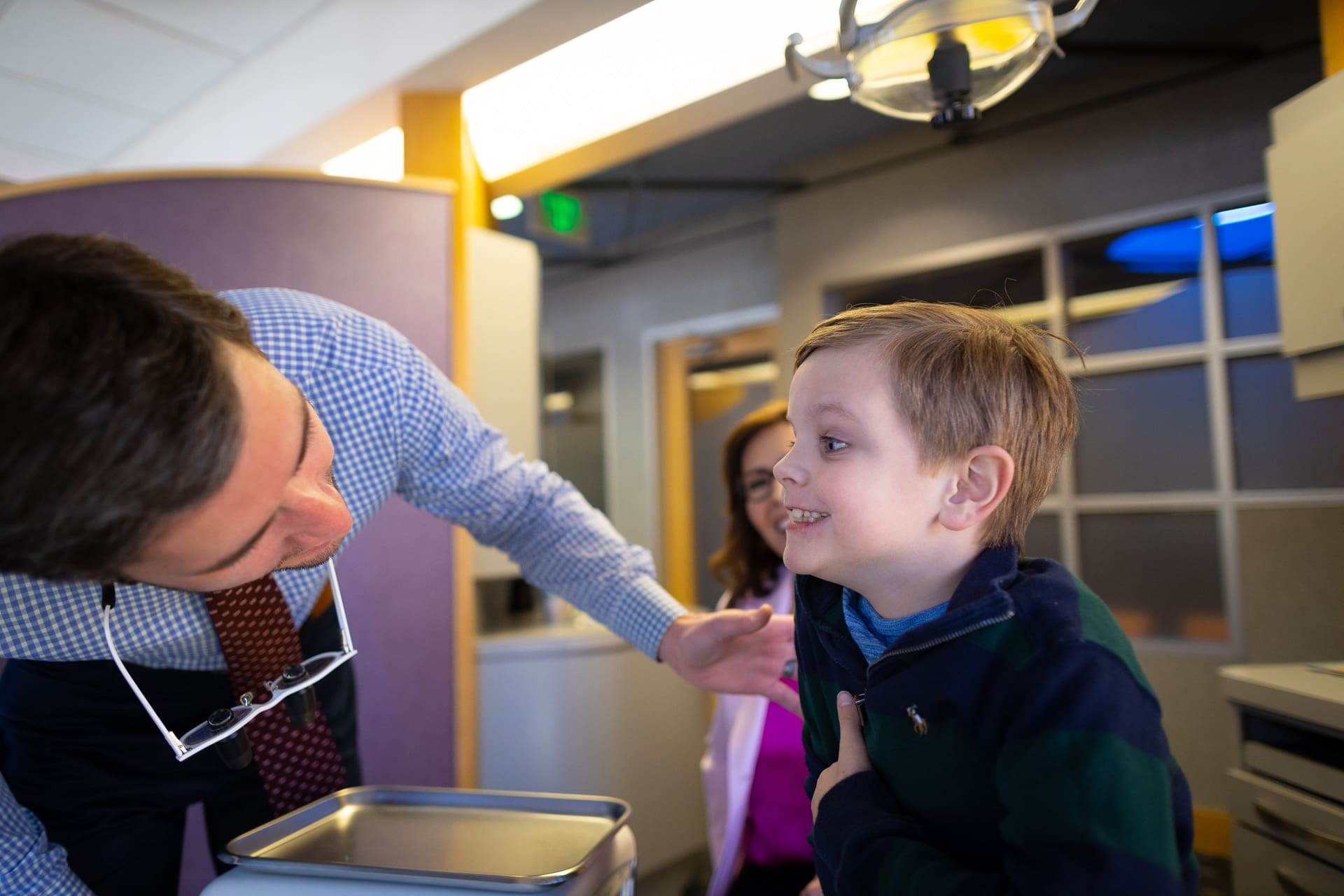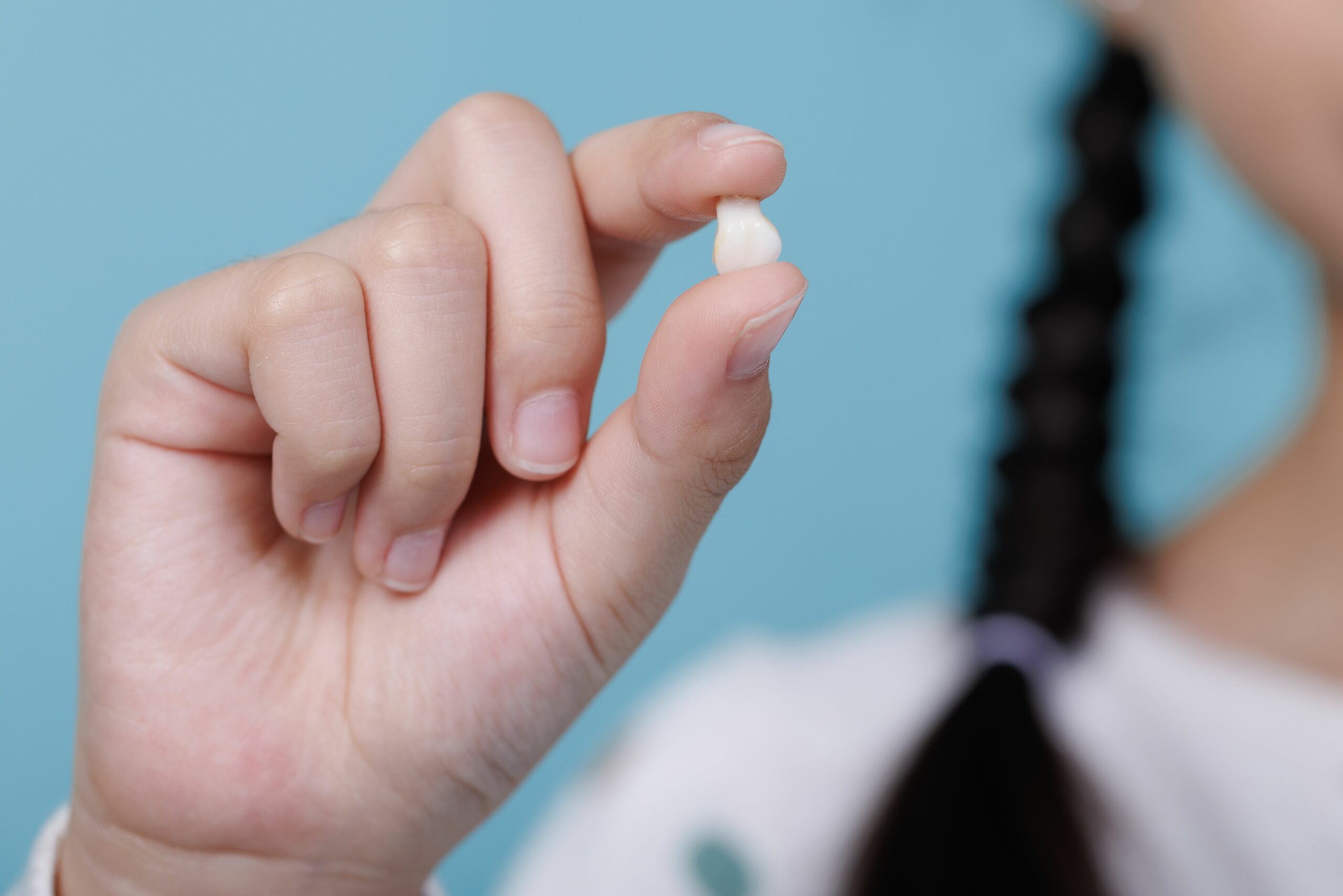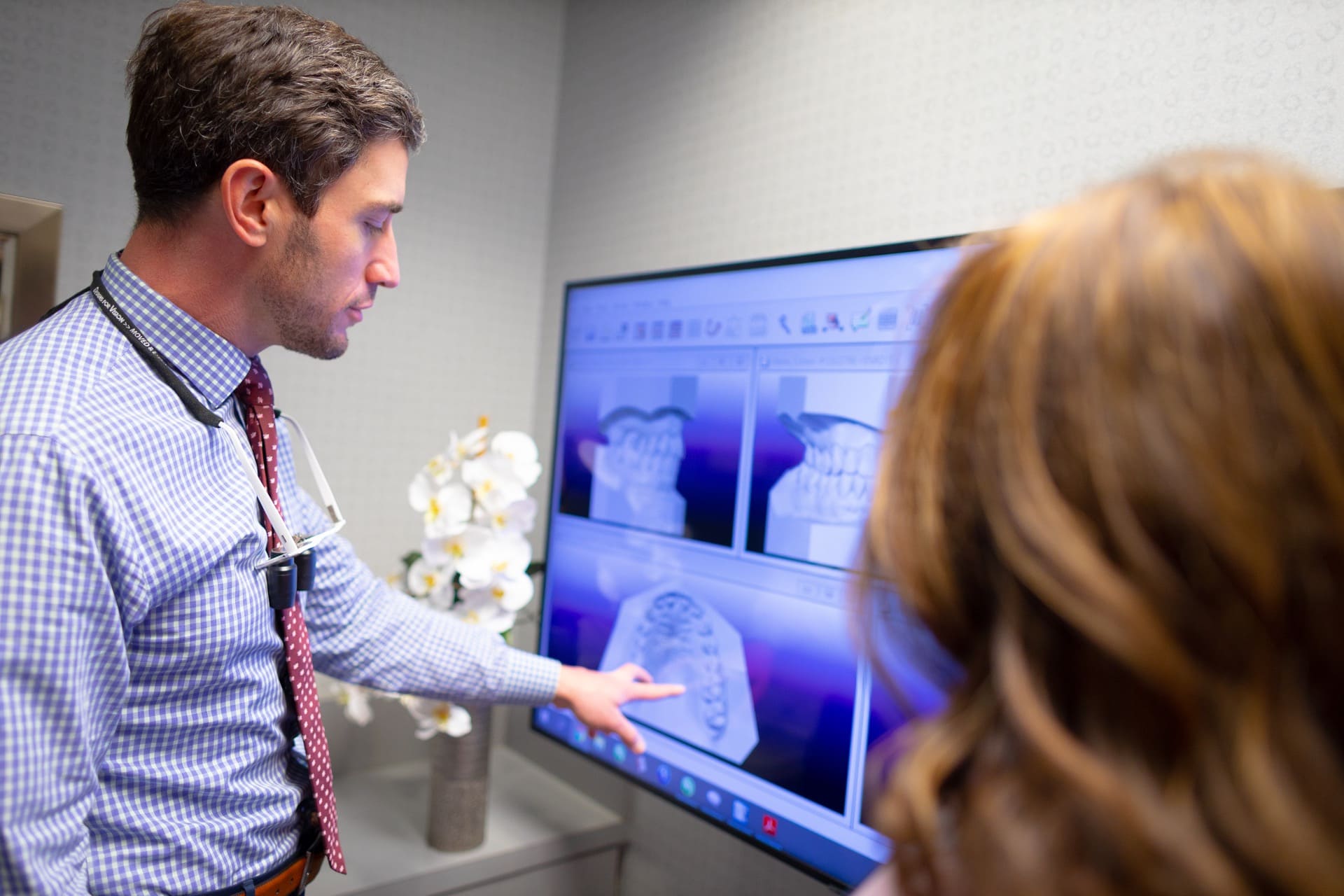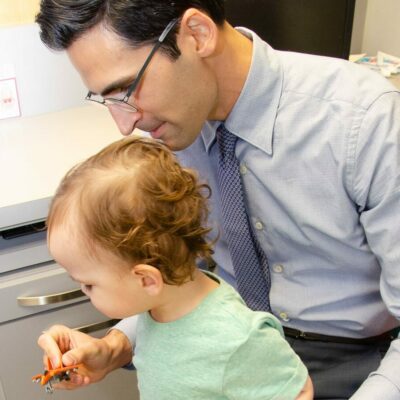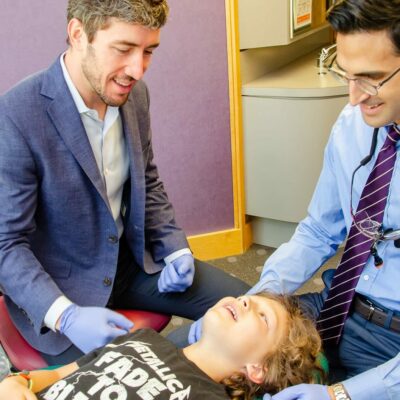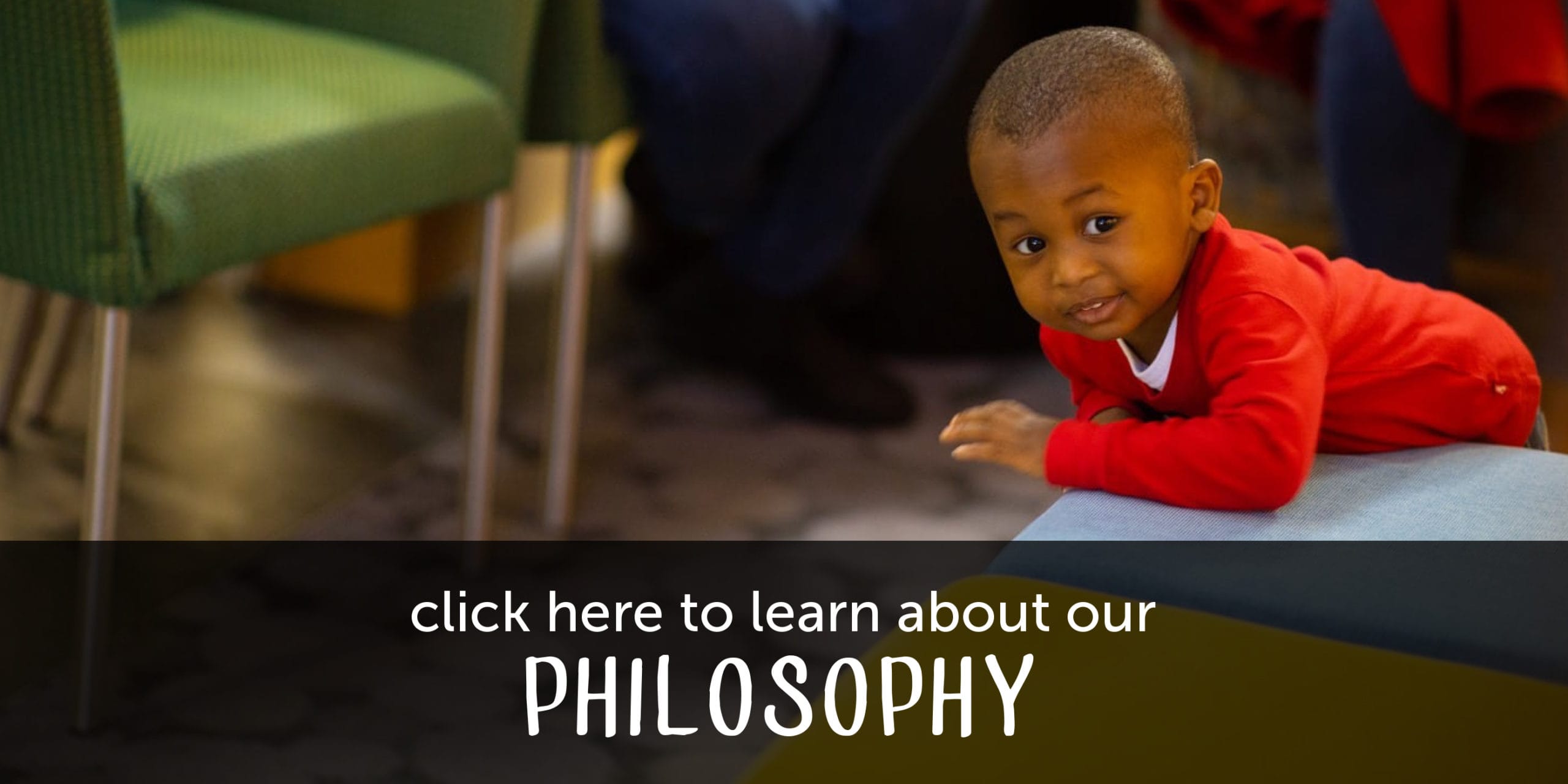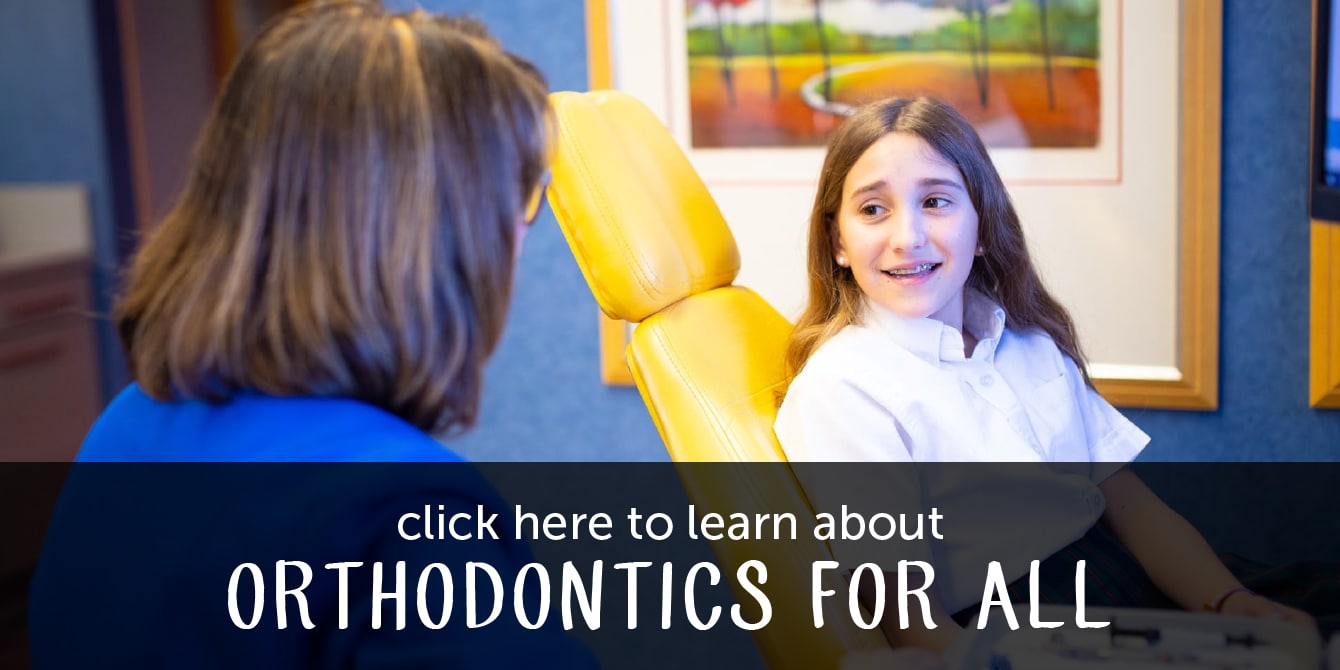Baby teeth have roots that naturally dissolve over time, which cause the tooth to become loose with only a few gum tissue fibers actually holding it in place. Most often, removing the wiggly tooth is simply detaching those remaining fibers.
We can probably agree that it is best for a baby tooth to work its way out on its own. The child can help by continually moving it with their tongue, clean fingers or simply munching on crunchy foods. Many a tooth has been lost in a school cafeteria while eating lunch. Sometimes a child doesn’t even realize it came out as there was little holding it in and minimal bleeding. Also, if accidentally swallowed, the tooth will typically travel naturally the path of other waste materials out of their bodies.The tooth fairy has been known to accept notes of explanation in place of a tooth!
Frequently we encounter parents who are uncomfortable removing their child’s loose baby teeth or even watching them wiggle their teeth. If so, encourage your child to wash their hands and move it back and forth when watching TV, riding in the car or reading books so that the tooth is more likely to simply fall out.
There are also situations where a child does not like moving their own loose teeth.This causes trapped germs and food to collect, creating tender gums from inflammation. The child might then avoid touching or brushing their sore tooth allowing the tooth to remain in their mouth too long.
If you need support, our team is happy to step in with suggestions or to gently remove the tooth with our doctors’ experienced skills.
When the wiggle method just isn’t working, here are other ideas you might try:
- In preparation, you can treat the gums around the tooth with either a numbing/teething gel containing benzocaine or a simple ice pack/cube held on the site for a minute or so to desensitize the area.
- Use a piece of sterile gauze or clean cloth for a solid grip as teeth can be quite slippery! Also, have a second folded piece of gauze or tissue handy for them to bite on once the tooth is out to stop the bleeding, if necessary.
- We all know the phrase “pull their tooth,” however, that action is the least effective way to remove their tooth. When a tooth is loose, it is generally less connected on one side or another. Pushing it firmly and quickly in the direction from most to least attached helps to free the tooth. An even more effective pattern is to twist the tooth like opening a jar, often creating an immediate release.
- Another strategy is to take 10-12 inches of regular dental floss, loop it on both sides of the tooth around the back side, with the two loose ends coming out of the front. Crisscross those ends, tighten them at the base (gum line) of the tooth, and then pull the ends quickly away from each other to detach the fibers holding the tooth in place.
Contact our office today!
Losing a tooth is a special time with many children seeing it as a moment of celebration while others feel dread and can be a bit fearful. Our team at myKIDSdds is happy to guide or assist you in getting through this “rite of passage” and as your resource for any challenging situations that might arise.
Healthy Smile, Healthy Child
Of course, a beautiful smile begins with a healthy smile. Our team will help your child achieve good oral hygiene through regular cleanings and one on one education. Your little one will receive an oral hygiene score and coaching each time they visit us for a cleaning, cultivating a sense of responsibility and accomplishment while also building their confidence each time they improve their score. Don’t forget, a clean mouth promotes total body health and wellness too! This is why our doctors will screen for airway issues, talk about nutrition, eating habits, and much more. We want our patients to be empowered in the knowledge we provide to them on the health of their facial complex and how it relates to their overall systemic health. We are excited to partner with you throughout your child’s pediatric dental journey into orthodontics, and beyond!
